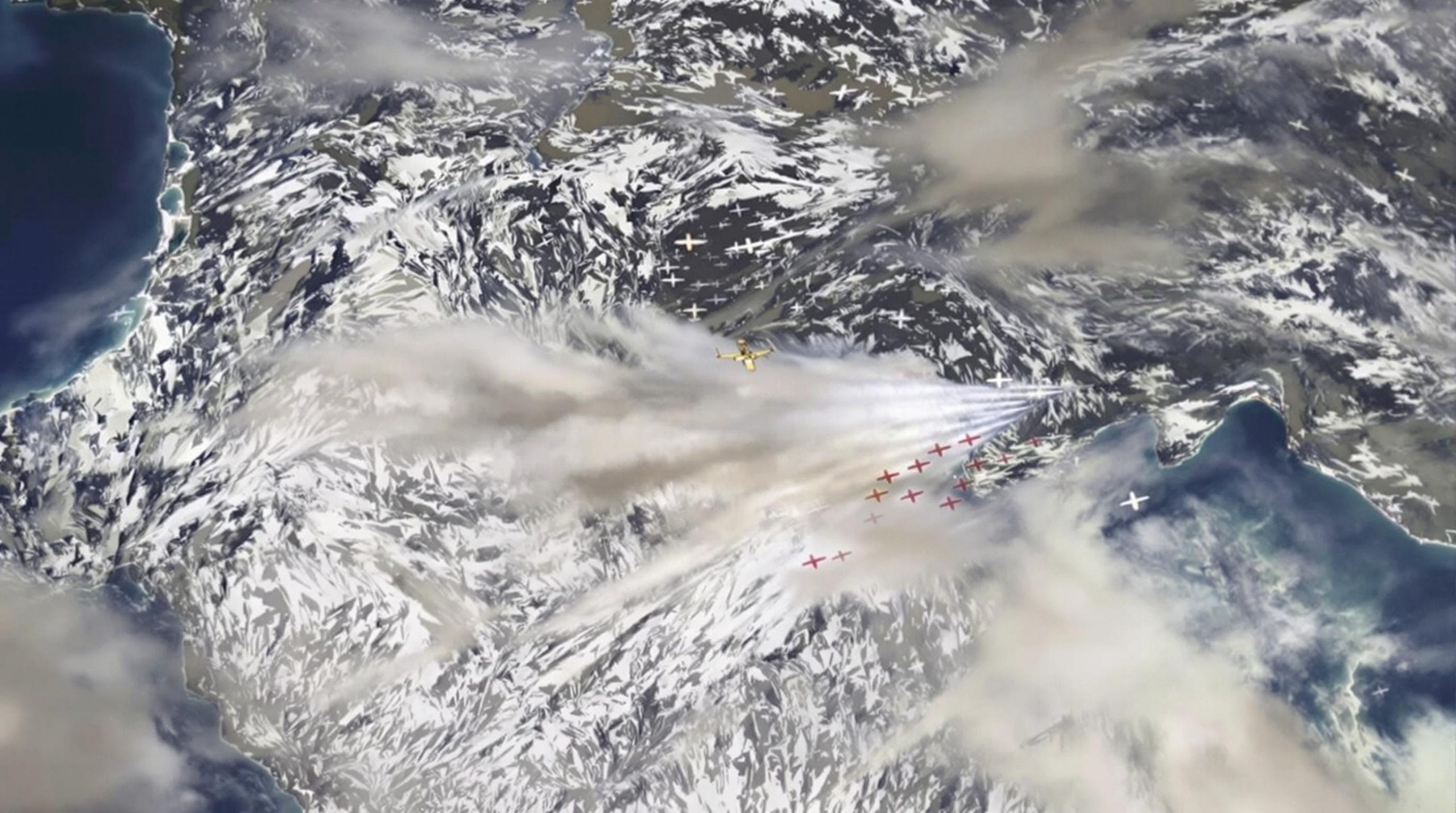Tensions Flare: U.S. Airstrikes in Iran Dominate Global Searches
Recent U.S. airstrikes against Iranian nuclear facilities have triggered unprecedented global interest, with millions worldwide searching for updates on Operation Midnight Hammer and its implications for Middle East stability. The coordinated strikes on June 22, 2025, mark the first direct American military intervention in the escalating Iran-Israel conflict, fundamentally altering the geopolitical landscape and raising critical questions about Nuclear Security and International Relations.
Key Takeaways
- Operation Midnight Hammer deployed 14 bunker-buster bombs weighing 30,000 pounds each against three major Iranian nuclear facilities on June 22, 2025
- The strikes represent the first direct U.S. military action in the Iran-Israel war that began June 13, 2025
- B-2 Spirit stealth bombers and Tomahawk missiles targeted the heavily fortified Fordow facility located 80-90 meters underground
- Global search interest in “U.S. airstrikes Iran” and related terms spiked dramatically following the operation
- President Trump announced a ceasefire between Iran and Israel one day after the strikes, though regional tensions remain high
Operation Midnight Hammer: Unprecedented Military Escalation
The coordinated airstrikes on June 22, 2025, represented a dramatic escalation in the ongoing Middle East crisis. U.S. Air Force and Navy forces targeted three critical Iranian nuclear installations: the Fordow Uranium Enrichment Plant, Natanz Nuclear Facility, and Isfahan Nuclear Technology Center. This marked the first time American forces directly engaged Iran in the conflict that began with Israeli strikes on June 13.
The operation’s code name, Operation Midnight Hammer, reflects both its timing and devastating impact. Military planners chose this designation to emphasize the precision and force of the coordinated assault on Iran’s most sensitive nuclear infrastructure. The strikes fundamentally altered the conflict’s trajectory, transforming a regional dispute into a potential catalyst for broader International Relations upheaval.
Military Arsenal: Bunker Busters and Advanced Weaponry
The scale of Military Action deployed against Iran’s nuclear facilities was unprecedented. American forces utilized 14 GBU-57A/B Massive Ordnance Penetrator bombs, each weighing 30,000 pounds (14,000 kg), specifically designed to penetrate hardened underground targets. Only the Northrop B-2 Spirit stealth bombers possess the capability to deliver these massive weapons, underscoring America’s technological advantage.
The Fordow facility presented the greatest challenge, located 80-90 meters underground and protected by multiple layers of reinforced concrete and air defenses. This depth required the most advanced bunker-busting technology available. Additionally, Tomahawk cruise missiles launched from a U.S. submarine provided supplementary strike capability against surface installations.
The weapon selection demonstrates careful planning for maximum effectiveness. Military analysts noted that conventional ordnance would have been insufficient against these fortified targets, necessitating the deployment of America’s most powerful conventional weapons.
Escalation Timeline: From Regional Conflict to Global Crisis
The current crisis began on June 13, 2025, when Israel launched its own airstrikes against Iranian nuclear sites and military leadership. Iran immediately retaliated with missile and drone attacks against Israeli cities, creating a dangerous cycle of escalation. The conflict’s roots trace back to failed diplomatic efforts earlier in 2025.
Key developments unfolded rapidly throughout the crisis. The International Atomic Energy Agency (IAEA) found Iran non-compliant with nuclear obligations for the first time in two decades, citing accelerated uranium enrichment activities. April 2025 negotiations between the U.S. and Iran collapsed when Iran declared uranium enrichment non-negotiable.
Iran’s regional position had weakened significantly since 2023 due to the collapse of key allies. The fall of Syria’s government, along with the degradation of Hezbollah and Hamas capabilities, left Iran more diplomatically isolated. This vulnerability may have influenced both Israeli and American calculations regarding Military Action timing.
Presidential Claims and Damage Assessment
President Trump’s public statements about the strikes generated significant controversy. He claimed the operation “completely and totally obliterated” Iran’s key nuclear facilities, presenting the strikes as a definitive solution to the nuclear threat. These assertions dominated Breaking News coverage and social media discussions.
However, preliminary intelligence assessments suggested more limited effects than initially claimed. Military analysts emphasized that damage evaluation requires time and comprehensive reconnaissance. The underground nature of key facilities makes immediate assessment particularly challenging.
Official casualty figures remain unreleased, adding to uncertainty about the strikes’ full impact. The disparity between presidential claims and early intelligence reports highlights the complexity of evaluating such operations. This uncertainty contributes to ongoing debates about the mission’s actual effectiveness.
Political Firestorm: Domestic and International Reactions
Congressional reaction split largely along partisan lines, with Republicans supporting the strikes and most Democrats expressing concern. Opposition voices cited constitutional authority questions, escalation risks, and the potential for Iranian retaliation. Some Republicans also joined Democratic concerns about constitutional authorization for such significant Military Action.
International responses varied dramatically across different regions and alliance structures. Some nations welcomed decisive action against Iran’s nuclear ambitions, viewing the strikes as necessary for regional stability. Others condemned the escalation, warning of dangerous precedents for international law and diplomacy.
Iran’s immediate retaliation against a U.S. base in Qatar demonstrated the conflict’s potential for further expansion. This response confirmed opponents’ fears about escalation while reinforcing supporters’ arguments about Iranian aggression. The attack underscored how quickly regional tensions can spiral into broader military confrontations.
Global Search Surge: Public Fascination with Nuclear Brinkmanship
The strikes triggered an unprecedented surge in global search activity, with millions seeking information about “U.S. airstrikes Iran” and “Operation Midnight Hammer.” This massive public interest reflects widespread concern about nuclear proliferation and potential World War III scenarios. Search data reveals particular focus on technical details about bunker-buster bombs and Iranian nuclear capabilities.
Social media platforms experienced similar spikes in engagement around Iran-related content. Public concern about escalation and nuclear proliferation reached levels not seen since the Cuban Missile Crisis, according to polling data. The search patterns indicate heightened awareness of Geopolitics among ordinary citizens.
Search trends also revealed geographic variations in public interest. Middle Eastern populations showed intense focus on immediate security implications, while Western audiences concentrated on broader geopolitical consequences. This pattern suggests different regional priorities regarding the conflict’s potential outcomes.
Diplomatic Gambit: Ceasefire Amid Chaos
President Trump’s announcement of a ceasefire between Iran and Israel came just one day after the strikes, representing a dramatic shift in diplomatic tone. The timing suggested either successful behind-the-scenes negotiations or a calculated gamble to prevent further escalation. This diplomatic intervention caught many observers by surprise.
The ceasefire announcement coincided with significant shifts in Trump’s policy approach, demonstrating how foreign crises can influence broader governmental priorities. However, regional tensions remain elevated despite the official ceasefire, with sporadic incidents continuing to threaten stability.
The sustainability of this diplomatic arrangement remains questionable given the underlying conflicts. Both Iran and Israel face domestic pressures that could undermine ceasefire commitments. Regional stability depends on whether this pause allows for meaningful diplomatic progress or merely delays inevitable confrontation.
Middle East Powder Keg: Long-term Security Implications
The strikes have transformed the Middle East into an even more volatile arena for great-power competition involving the U.S., China, and Russia. Each power seeks to advance its interests while managing escalation risks, creating a complex web of competing priorities. This dynamic increases the potential for proxy conflicts centered on nuclear proliferation and regional influence.
Iran’s hybrid warfare capabilities, though diminished by recent proxy losses, remain a significant concern for U.S. Foreign Policy planners. The regime’s ability to conduct asymmetric operations through remaining allied groups presents ongoing challenges. Military analysts warn that Iran may shift tactics toward more direct confrontation given reduced proxy options.
The broader implications extend beyond immediate military concerns to encompass nuclear nonproliferation efforts globally. Other nations with nuclear ambitions are closely watching how the international community responds to this crisis. The precedent set by these strikes may influence future approaches to preventive military action against nuclear programs.
Long-term ramifications include potential shifts in alliance structures and military deployments throughout the region. NATO allies are reassessing their Middle East commitments while regional powers recalculate their strategic positions. The crisis demonstrates how quickly local conflicts can escalate into matters of global National Security concern.
Sources
This analysis draws from multiple authoritative sources including United States strikes on Iranian nuclear sites, CBS News, and USNI News. Additional insights come from RAND Corporation analysis and Marist Poll data on public opinion trends.
latest video
news via inbox
Nulla turp dis cursus. Integer liberos euismod pretium faucibua





